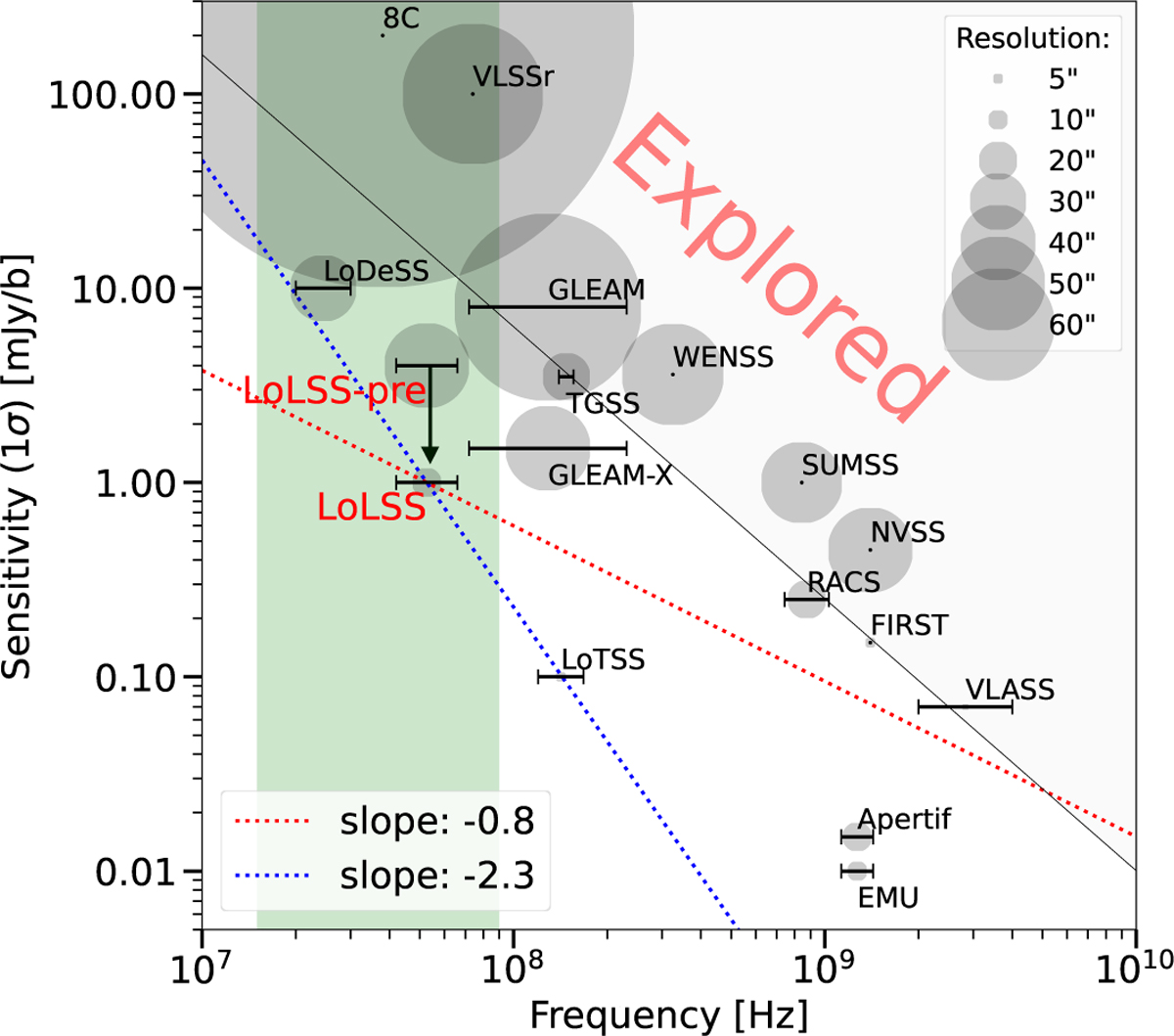Fig. 1

Download original image
Comparison of sensitivity for a number of completed and ongoing wide-area radio surveys. The diameters of the grey circles are proportional to the survey resolution as shown in the top right corner. The green region shows the frequency range covered by the LOFAR LBA system. Data presented in this paper are labelled as 'LoLSS', whilst the preliminary release of the LoLSS survey is labelled as 'LoLSS-pre'. For sources with a very steep spectral index (α ≲ −2.3), LoLSS is the most sensitive survey currently available. References: 8C (Rees 1990); GLEAM & GLEAM-X (GaLactic and Extragalactic All-sky Murchison Widefield Array survey; Hurley-Walker et al. 2017, 2022); TGSS ADR1 (TIFR GMRT Sky Survey - Alternative Data Release 1; Intema et al. 2017); VLSSr (VLA Low-frequency Sky Survey redux; Lane et al. 2014); FIRST (Faint Images of the Radio Sky at Twenty Centimetres; Becker et al. 1995); NVSS (1.4 GHz NRAO VLA Sky Survey; Condon et al. 1998); WENSS (The Westerbork Northern Sky Survey; Rengelink et al. 1997); SUMSS (Sydney University Molonglo Sky Survey; Bock et al. 1999); RACS (Rapid ASKAP Continuum Survey; McConnell et al. 2020); Apertif (Adams et al. 2022); EMU (Evolutionary Map of the Universe; Norris et al. 2011); VLASS (VLA Sky Survey; Lacy et al. 2020); LoTSS (LOFAR Two-metre Sky Survey; Shimwell et al. 2017); LoDeSS (LOFAR Decameter Sky Survey; Groeneveld et al., in prep.).
Current usage metrics show cumulative count of Article Views (full-text article views including HTML views, PDF and ePub downloads, according to the available data) and Abstracts Views on Vision4Press platform.
Data correspond to usage on the plateform after 2015. The current usage metrics is available 48-96 hours after online publication and is updated daily on week days.
Initial download of the metrics may take a while.


